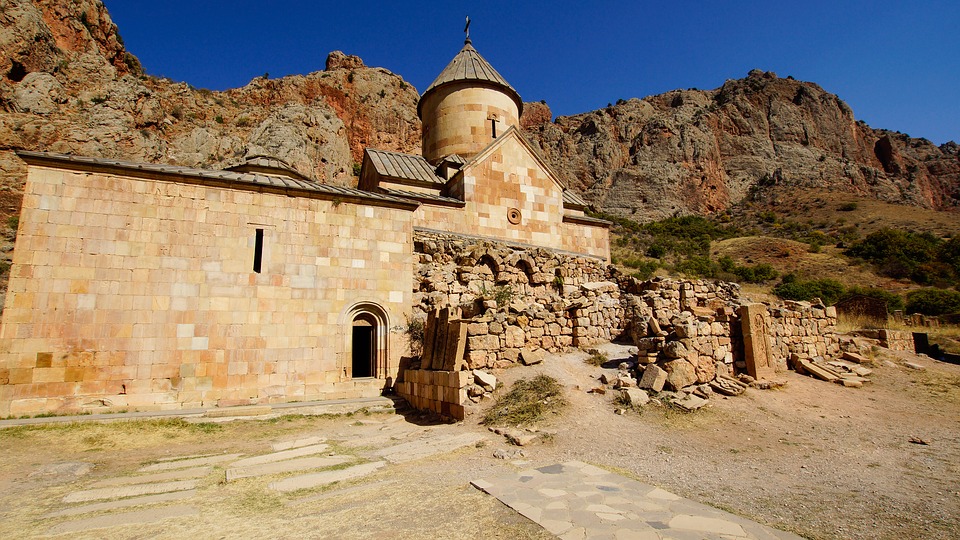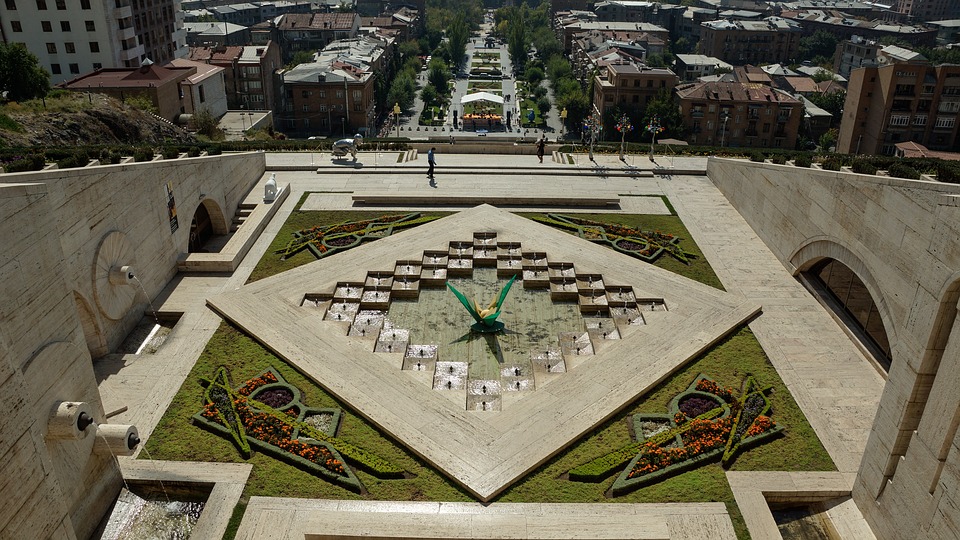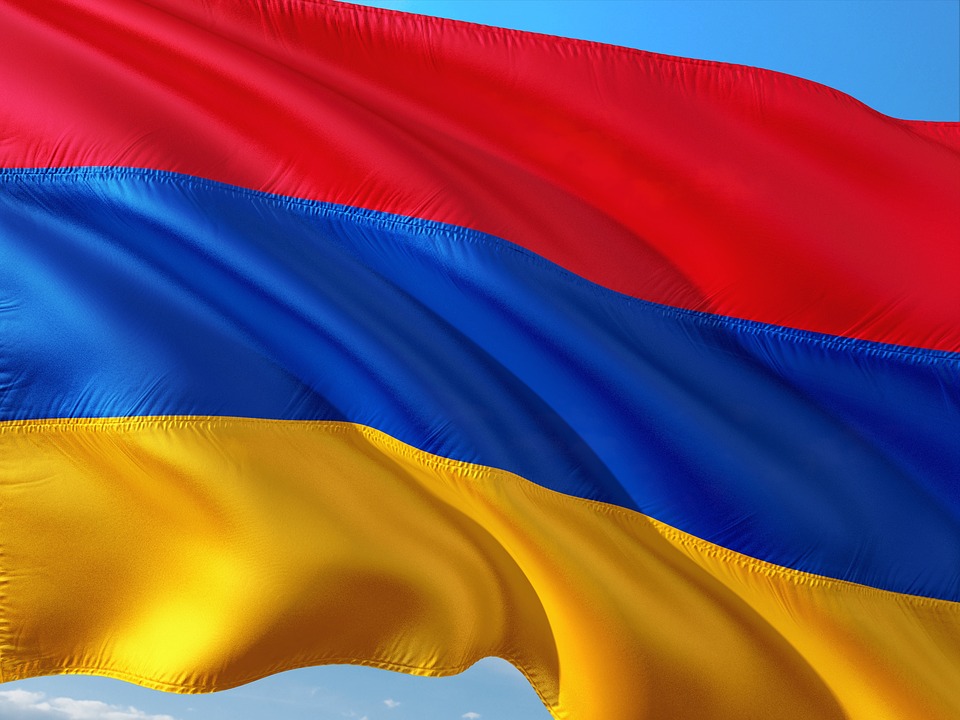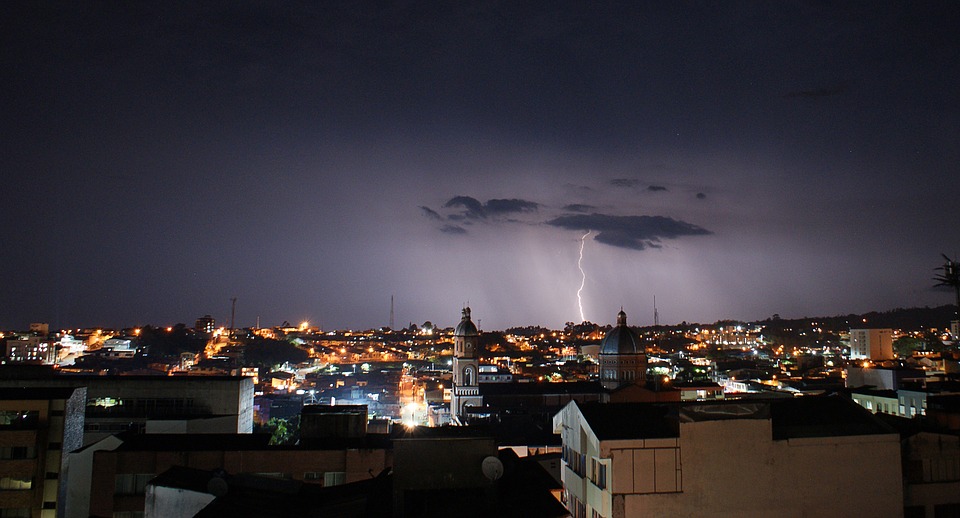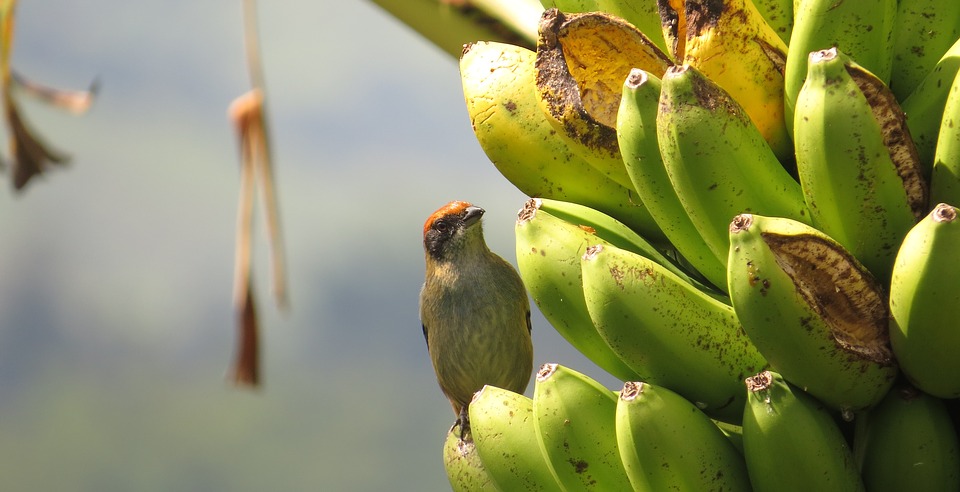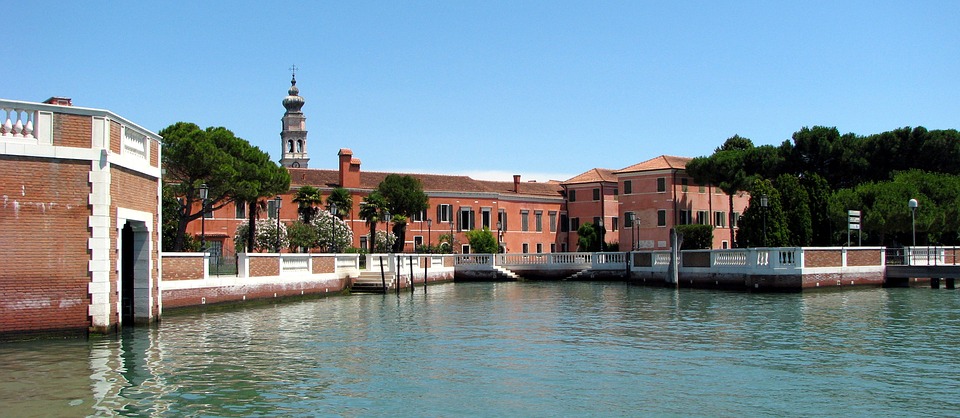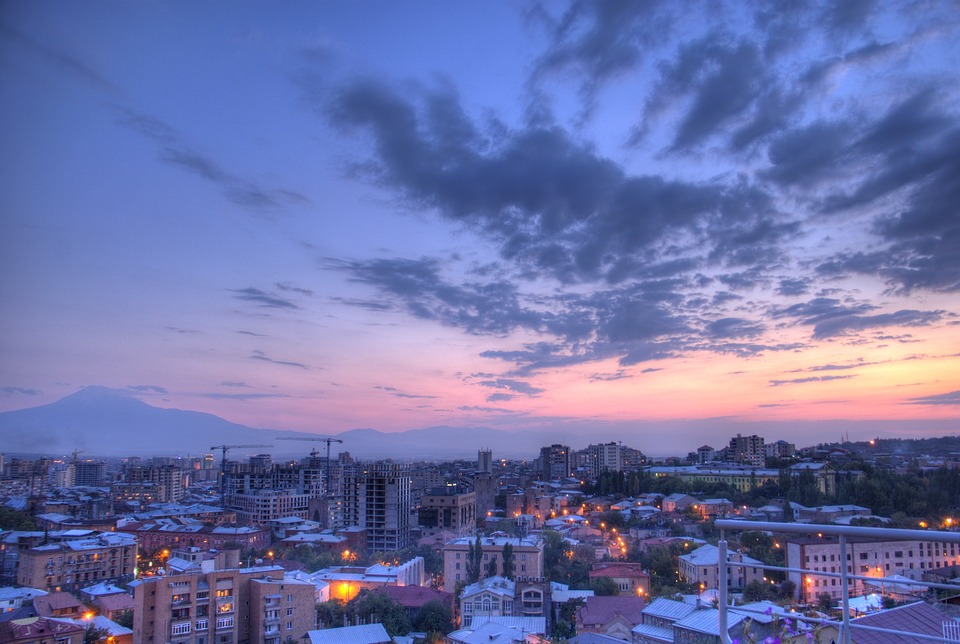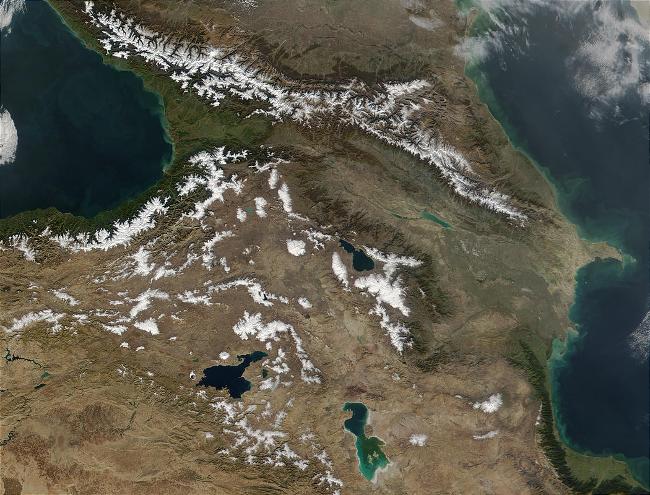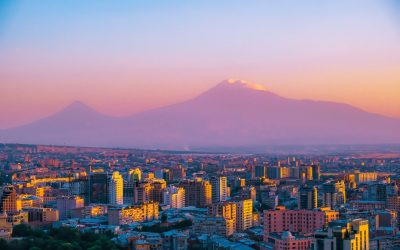Armenia
(Hayastani Hanrapetut’yun (Republic of Armenia))

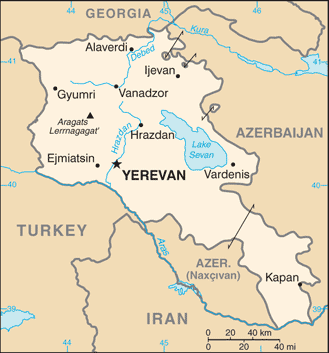
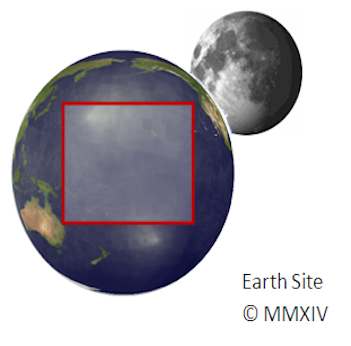
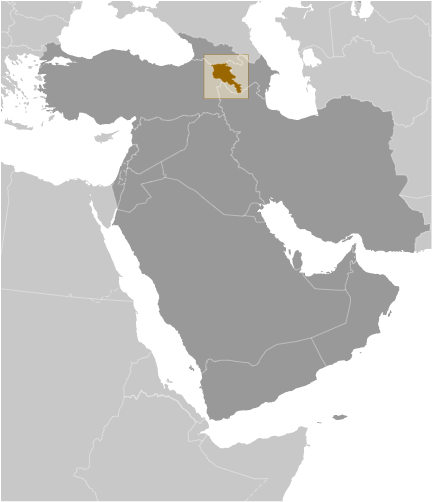
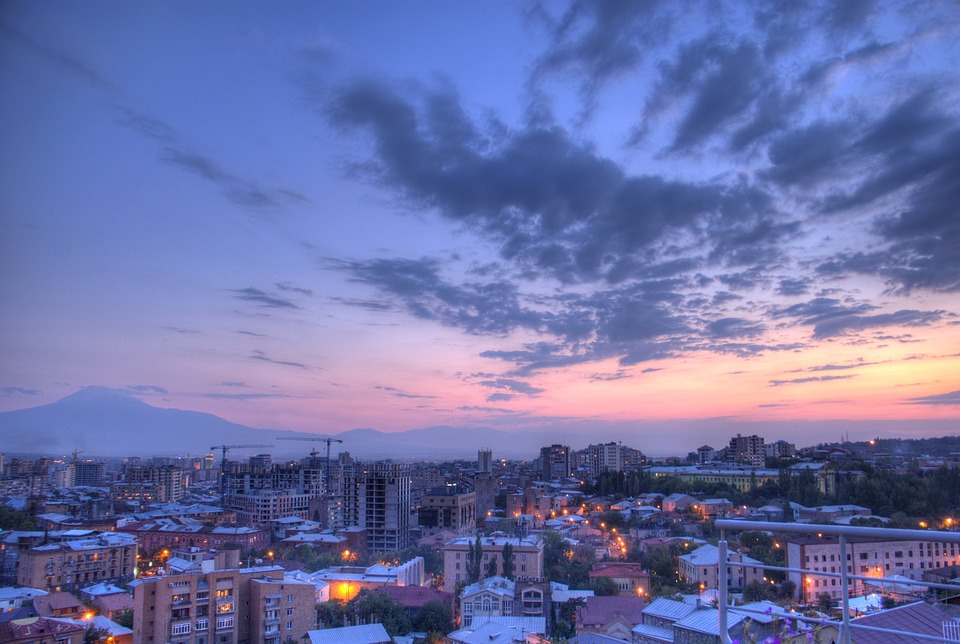
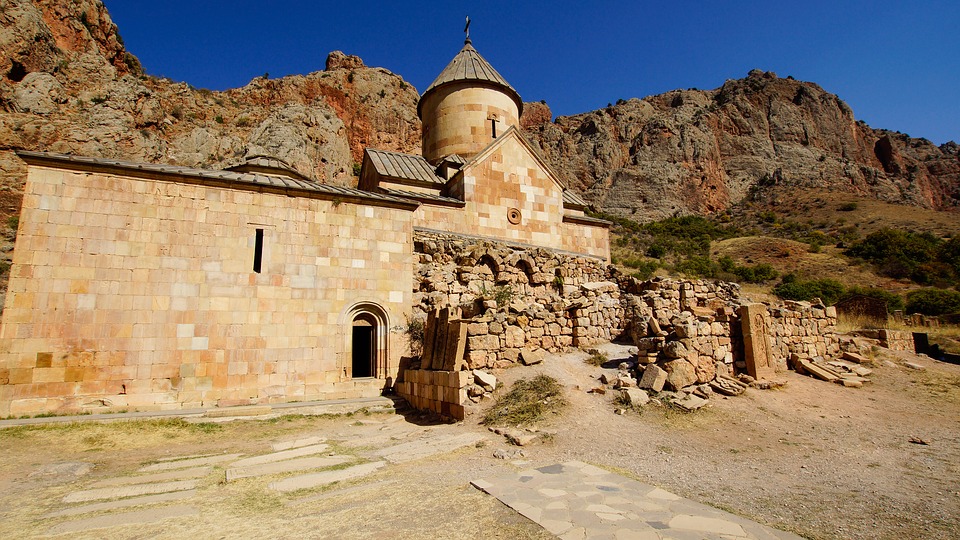
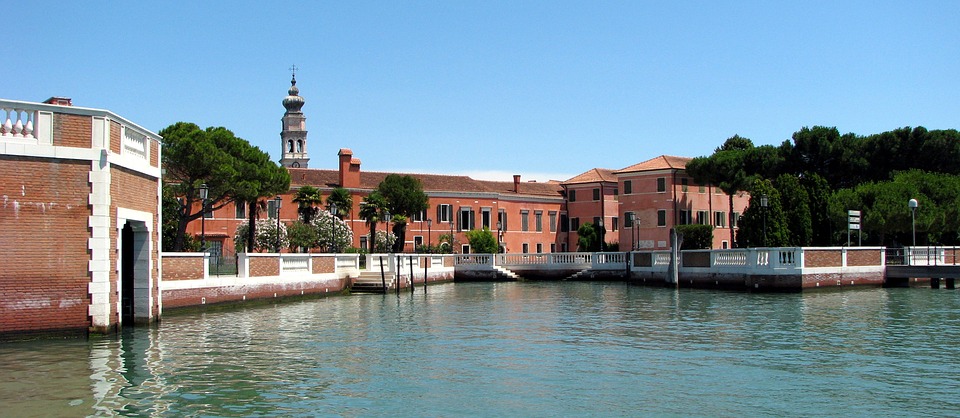
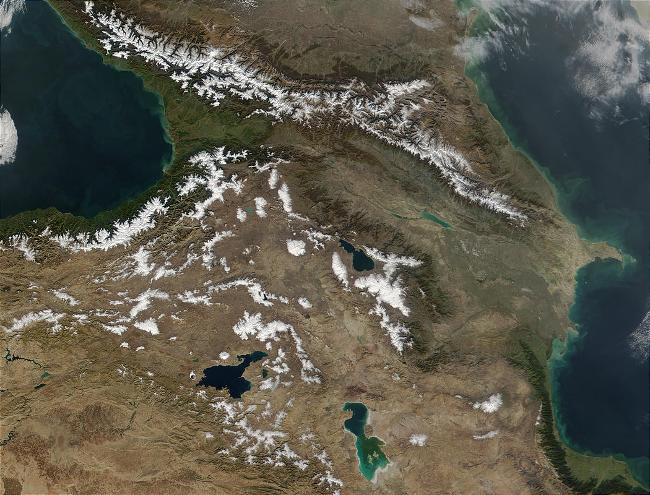
Capital: Yerevan
Population (Estimated July 2012): 2,970,495
Area: 29,743 km2 or 11,484 mi2
Currency: Armenian Dram (AMD)
Official Language: Armenian
Political Information: Parliamentary Republic
Official Religion: No Official Religion (approximately 94.7% of the population Armenian Apostolic, 4% have other Christian beliefs and 1.3% are Yezidi)
Highest Mountain: Aragats Lerrnagagat at 4,090m or 13,419ft
GDP Official Exchange Rate (OER is more precise at gauging a countries economic power)
(Estimated 2017): $11.04 billion (US$) or £8.27 billion (GBP)
GDP (OER) Per Capita (per member of the population estimated 2016): $3,614 (US$) or £2,707 (GBP)
GDP Purchasing Power Parity (PPP is good for gauging living conditions and use of resources but not as accurate as OER. This data has been calculated based on the sum value of all goods and services produced in the country valued at prices prevailing in the United States)
(Estimated 2017): $27.21 billion (US$) or £20.39 billion(GBP)
GDP (PPP) Per Capita (per member of the population estimated 2017): $9,100 (US$) or £6,818 (GBP)
Time Zone (GMT/UTC): +4:00
Counties/Provinces/States: Provinces (marzer, singular – marz); Aragatsotn, Ararat, Armavir, Geghark’unik’, Kotayk’, Lorri, Shirak, Syunik’, Tavush, Vayots’ Dzor, Yerevan
Leaders: President Armen SARKISSIAN (since 9 April 2018); Prime Minister Nikol PASHINYAN (since 8 May 2018); First Deputy Prime Minister Ararat MIRZOYAN (since 11 May 2018)
Sources: CIA World Fact Book, Encyclopaedia Britannica,
Armenia, a small landlocked country in the South Caucasus region of Eurasia, is a hidden gem waiting to be discovered. With its rich history, vibrant culture, and breathtaking landscapes, Armenia offers a unique and unforgettable experience for travellers. From its ancient monasteries and churches to its delicious cuisine and warm hospitality, Armenia has something to offer for everyone. In this article, we will explore the various aspects that make Armenia truly special and why it should be on your travel bucket list.
Location and Geography: Discovering Armenia’s Unique Landscape and Climate
Armenia is located in the South Caucasus region, bordered by Turkey to the west, Georgia to the north, Azerbaijan to the east, and Iran to the south. Despite being a small country, Armenia boasts diverse landscapes that range from lush forests and alpine meadows to rugged mountains and deep canyons. The country is home to Mount Ararat, a dormant volcano and national symbol of Armenia, which offers stunning views and hiking opportunities.
The climate in Armenia is continental, with hot summers and cold winters. The country experiences four distinct seasons, each with its own charm. Spring brings blooming flowers and mild temperatures, while summer is characterized by sunny days and pleasant evenings. Autumn paints the landscapes with vibrant colours as the leaves change, creating a picturesque backdrop for outdoor activities. Winter brings snow-covered mountains and opportunities for skiing and snowboarding.
History and Culture: Uncovering Armenia’s Rich Heritage and Traditions
Armenia has a rich history that dates back thousands of years. It is one of the oldest countries in the world, with evidence of human habitation dating back to the Stone Age. Throughout its history, Armenia has been influenced by various empires and civilizations, including the Roman Empire, Persian Empire, Byzantine Empire, and Ottoman Empire.
Armenian culture is deeply rooted in its history and traditions. The country is known for its unique music, dance, and art forms, which have been passed down through generations. Traditional Armenian music is characterized by its haunting melodies and the use of instruments such as the duduk, a double-reed woodwind instrument. Armenian dance is energetic and expressive, with intricate footwork and vibrant costumes.
Cuisine: Exploring Armenia’s Delicious and Unique Food and Drink
Armenian cuisine is a true reflection of the country’s rich history and cultural heritage. It is a fusion of flavours from the Middle East, Mediterranean, and Eastern Europe, resulting in a unique culinary experience. The cuisine is known for its use of fresh ingredients, bold flavours, and hearty dishes.
One of the most famous Armenian dishes is khorovats, a traditional barbecue made with marinated meat, usually pork or lamb, cooked on an open flame. Another popular dish is dolma, which consists of grape leaves stuffed with a mixture of rice, meat, and herbs. Lavash, a thin unleavened bread, is a staple in Armenian cuisine and is often used to wrap various fillings.
Armenia is also known for its wine production, with a history that dates back thousands of years. The country has a unique winemaking tradition that combines ancient techniques with modern technology. Armenian wines are known for their rich flavours and unique characteristics, making them a must-try for wine enthusiasts.
Language: Understanding Armenia’s Linguistic Diversity and History
The official language of Armenia is Armenian, which has its own unique alphabet and is one of the oldest written languages in the world. The Armenian language has a rich history that dates back to the 5th century AD when it was developed by Saint Mesrop Mashtots.
Armenian is an Indo-European language and has two main dialects: Eastern Armenian and Western Armenian. Eastern Armenian is spoken in Armenia and is the standard form of the language, while Western Armenian is spoken by the Armenian diaspora in various countries around the world.
In addition to Armenian, many Armenians also speak Russian and English, especially in urban areas and among the younger generation. The linguistic diversity in Armenia reflects its history and cultural connections with neighbouring countries.
Religion: Examining Armenia’s Deeply Religious and Spiritual Identity
Religion plays a significant role in Armenian culture and identity. The majority of Armenians belong to the Armenian Apostolic Church, which is one of the oldest Christian churches in the world. Christianity was adopted as the state religion of Armenia in 301 AD, making it the first country to do so.
The Armenian Apostolic Church has its own unique traditions and rituals, which are deeply rooted in Armenian culture. The church is known for its beautiful religious art and architecture, with many ancient monasteries and churches scattered throughout the country. Some of the most famous religious sites include Etchmiadzin Cathedral, Geghard Monastery, and Tatev Monastery.
Despite being predominantly Christian, Armenia is also home to other religious communities, including Muslims, Yazidis, and Jews. The country has a long history of religious tolerance and coexistence, with different religious communities living side by side for centuries.
Architecture: Admiring the Beauty of Armenia’s Ancient and Modern Buildings
Armenian architecture is a testament to the country’s rich history and cultural heritage. From ancient temples and monasteries to modern buildings, Armenia boasts a diverse range of architectural styles.
One of the most iconic examples of Armenian architecture is the medieval monastic complex of Geghard, which is carved into the side of a mountain. The complex is a UNESCO World Heritage site and is known for its intricate stone carvings and stunning natural surroundings.
Another famous architectural landmark in Armenia is the Tatev Monastery, located on a remote hilltop overlooking the Vorotan Gorge. The monastery is accessible via the Wings of Tatev, the world’s longest reversible cable car, which offers breathtaking views of the surrounding landscapes.
In addition to its ancient architecture, Armenia is also home to modern architectural marvels. The Cascade in Yerevan, a massive staircase adorned with sculptures and fountains, is a popular gathering place for locals and tourists alike. The building also houses the Cafesjian Center for the Arts, which showcases contemporary art from Armenia and around the world.
Arts and Crafts: Appreciating Armenia’s Vibrant Artistic and Handicraft Traditions
Armenia has a long tradition of arts and crafts, with various forms of artistic expression dating back centuries. The country is known for its vibrant folk art, intricate embroidery, and unique pottery.
One of the most famous forms of Armenian art is khachkar, a carved stone cross that is found in abundance throughout the country. Khachkars are intricately carved with religious symbols and motifs and are considered to be masterpieces of Armenian craftsmanship.
Armenian carpet weaving is another traditional art form that has been passed down through generations. Armenian carpets are known for their intricate designs and vibrant colours, with each region having its own unique style. The art of carpet weaving in Armenia has been recognized by UNESCO as an Intangible Cultural Heritage of Humanity.
Festivals and Celebrations: Joining in Armenia’s Colourful and Joyful Festivities
Armenia is known for its vibrant festivals and celebrations, which showcase the country’s rich cultural heritage and traditions. From religious festivals to national holidays, there is always something to celebrate in Armenia.
One of the most important religious festivals in Armenia is Easter, which is celebrated with great enthusiasm and joy. The streets are filled with people carrying lit candles and participating in processions, while churches hold special services and ceremonies.
Another popular festival in Armenia is Vardavar, also known as the “Festival of Water.” This ancient pagan festival is celebrated in July and involves people dousing each other with water, symbolizing the cleansing of sins and the arrival of summer.
Independence Day, celebrated on September 21st, is a national holiday in Armenia and is marked by various events and festivities. The day is filled with concerts, parades, and fireworks, with people coming together to celebrate their country’s independence.
Tourism: Discovering Armenia’s Hidden Gems and Tourist Attractions
Armenia may be a small country, but it offers a wealth of tourist attractions and hidden gems waiting to be discovered. From ancient monasteries and churches to stunning natural landscapes, there is something for every type of traveller.
One of the must-visit destinations in Armenia is Lake Sevan, the largest lake in the country and one of the largest high-altitude lakes in the world. The lake is surrounded by picturesque mountains and offers opportunities for swimming, fishing, and boating.
Another popular tourist attraction is the ancient city of Garni, which is home to a well-preserved Hellenistic temple dedicated to the sun god Mihr. The temple is a UNESCO World Heritage site and offers stunning views of the surrounding landscapes.
For history enthusiasts, a visit to the city of Yerevan is a must. The capital city is home to numerous museums and historical sites, including the Armenian Genocide Memorial Complex, which commemorates the victims of the Armenian Genocide.
Economy: Understanding Armenia’s Economic Landscape and Future Prospects
Armenia has a developing economy that is primarily based on agriculture, mining, and services. The country has rich mineral resources, including copper, gold, and molybdenum, which contribute significantly to its economy.
In recent years, Armenia has made efforts to diversify its economy and attract foreign investment. The country has a growing IT sector and is known for its skilled workforce in the field of technology. Yerevan, in particular, has become a hub for tech startups and innovation.
Tourism also plays an important role in Armenia’s economy, with the number of international visitors increasing each year. The government has implemented various initiatives to promote tourism and improve infrastructure, making it easier for travelers to explore the country.
Despite its economic challenges, Armenia has a promising future with opportunities for growth and development. The country’s strategic location between Europe and Asia, combined with its rich cultural heritage and natural beauty, makes it an attractive destination for investors and tourists alike.
Armenia is a country that offers a unique and unforgettable experience for travellers. From its stunning landscapes and rich history to its vibrant culture and delicious cuisine, Armenia has something to offer for everyone. Whether you are exploring ancient monasteries, hiking in the mountains, or indulging in traditional Armenian dishes, you will be captivated by the beauty and charm of this hidden gem.
So why wait? Plan your trip to Armenia and immerse yourself in its rich heritage and traditions. Discover the warmth and hospitality of the Armenian people, explore its breathtaking landscapes, and create memories that will last a lifetime. Armenia is waiting to be explored, so pack your bags and get ready for an adventure like no other.
Political Boundaries of Armenia: Provinces, Districts, or Historical Boundaries.
Armenia, a landlocked country located in the South Caucasus region of Eurasia, is known for its rich history and cultural heritage. Understanding the political boundaries of Armenia is crucial for effective governance and administration. Political boundaries define...
Climate Zones of Armenia: Different climate regions Of Armenia
Armenia, a landlocked country in the South Caucasus region of Eurasia, is known for its diverse geography and climate. Situated between Europe and Asia, Armenia is surrounded by mountains and has a varied topography, ranging from highlands to lowlands. This...
Terrain and Topography of Armenia: mountains, valleys, and plains.
Armenia, a landlocked country in the South Caucasus region of Eurasia, is known for its diverse and stunning terrain. Nestled between the Black Sea to the north and the Caspian Sea to the east, Armenia is characterized by its mountainous landscape, deep valleys, and...
Cultural or Historical Sites of Armenia: Important Cultural Landmarks or Historical Sites In Armenia
Armenia, a small country located in the South Caucasus region of Eurasia, is known for its rich history and cultural heritage. With a history dating back thousands of years, Armenia has been home to various civilizations and empires, each leaving their mark on the...
Natural Resources of Armenia: Where Natural Resources are located In Armenia
Armenia, a landlocked country located in the South Caucasus region of Eurasia, is blessed with a diverse range of natural resources. Its geography is characterized by mountainous terrain, fertile valleys, and abundant water sources. These natural resources play a...
Population Density of Armenia
Population density refers to the number of people living in a specific area, usually measured per square kilometer. It is an important indicator that helps us understand how people are distributed across a country or region. Studying population density is crucial for...
Discovering the Rich Culture and History of Armenia: A Journey Through Time
Armenia, located in the South Caucasus region of Eurasia, is a country with a rich and vibrant culture that dates back thousands of years. Nestled between Turkey, Georgia, Azerbaijan, and Iran, Armenia has a unique blend of influences from both the East and the West....
